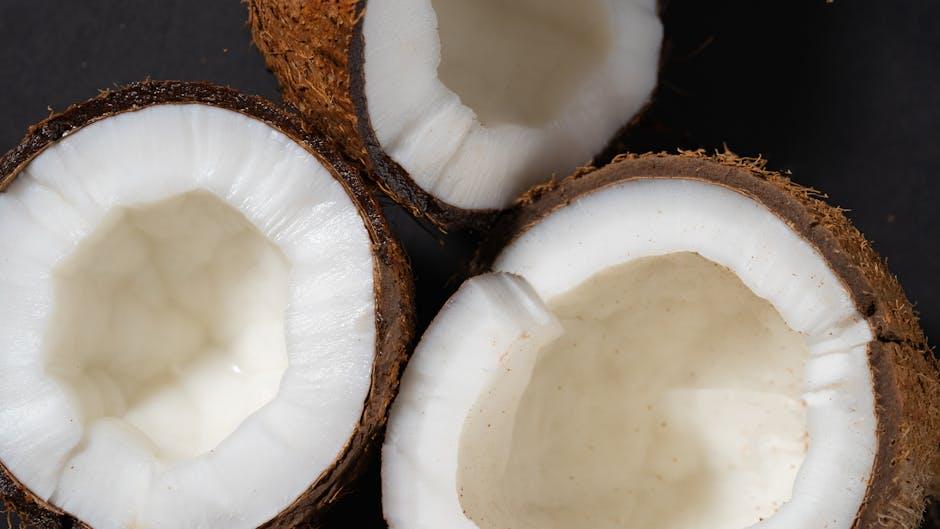In the bustling world of modern cuisine, where innovation meets tradition, a culinary revolution is quietly simmering. Meatless meats, once a futuristic notion, have carved their place on our plates, promising the savory satisfaction of meat without the ethical and environmental baggage. As these plant-based wonders become staples in our grocery aisles, a pressing question bubbles to the surface: Are these alternatives the epitome of health-conscious eating, or are they simply another product of over-processing? This article delves into the heart of the matter, exploring the intricate journey from plant to plate and unraveling the layers of complexity behind our favorite faux meats. Join us as we embark on a flavorful investigation, where taste meets technology, and curiosity meets culinary innovation.
Understanding the Ingredients in Plant-Based Proteins
Delving into the world of plant-based proteins, it’s essential to understand what goes into these meatless marvels. These products often feature a blend of ingredients, each with a specific purpose. Legumes like peas and lentils are common sources, providing a hearty dose of protein and fiber. Grains such as quinoa or brown rice add a nutty flavor and complement the amino acid profile. For texture, you’ll often find soy protein isolate or wheat gluten, which mimic the chewiness of meat.
Enhancing flavor is a crucial aspect, with ingredients like yeast extract and natural flavors working to create that umami taste we associate with meat. For a touch of richness, coconut oil or canola oil might be included, contributing to the juiciness and mouthfeel. It’s also common to see binders and stabilizers like methylcellulose or tapioca starch, which help maintain the structure during cooking. While these components might sound foreign, they are often derived from natural sources and play a pivotal role in making plant-based proteins a satisfying alternative.
- Legumes: Peas, lentils
- Grains: Quinoa, brown rice
- Texture Agents: Soy protein isolate, wheat gluten
- Flavor Enhancers: Yeast extract, natural flavors
- Richness Contributors: Coconut oil, canola oil
- Binders: Methylcellulose, tapioca starch
The Environmental Footprint of Meatless Alternatives
The rise of plant-based meat alternatives has sparked discussions around their environmental benefits compared to traditional meat production. While these products are often praised for their reduced carbon footprint, water usage, and land consumption, it is important to delve deeper into their overall impact on the planet.
- Carbon Footprint: Many meatless options produce significantly fewer greenhouse gases than livestock farming. However, the energy-intensive processing and packaging of these products can offset some of these gains.
- Water Usage: While generally requiring less water than animal farming, the cultivation of certain ingredients like soy and peas can still strain local water resources, especially in drought-prone areas.
- Land Use: Plant-based alternatives often utilize less land than raising livestock. However, the monoculture farming practices employed to grow key ingredients may contribute to biodiversity loss.
In weighing the environmental footprint of meatless meats, it becomes clear that while they offer numerous advantages over traditional meat, there is room for improvement in their production processes. As technology advances, so too should the strategies for minimizing the ecological impact of these innovative products.

Health Implications of Consuming Processed Plant-Based Meats
The growing popularity of plant-based meats has prompted a closer examination of their health implications. While these products offer a promising alternative to traditional meat, they often undergo significant processing. Processed plant-based meats are typically composed of ingredients such as pea protein isolate, soy protein concentrate, and a variety of additives designed to enhance texture and flavor. This raises questions about the nutritional profile and overall health impact of consuming such foods regularly.
- Sodium Content: Many of these products are high in sodium, which can contribute to increased blood pressure and related health issues if consumed in excess.
- Preservatives and Additives: To mimic the taste and texture of real meat, plant-based alternatives often include preservatives and artificial flavors, which some studies suggest may have adverse effects on health.
- Nutrient Density: While they provide protein, these products may lack other essential nutrients found in whole foods, potentially leading to dietary gaps if not balanced with other nutrient-rich foods.
Despite these concerns, it’s crucial to recognize that the can vary widely depending on the brand and formulation. As consumers become more health-conscious, manufacturers are continuously improving their recipes to offer healthier options. As always, moderation and a balanced diet remain key to maintaining good health.

Navigating the Market: Choosing Healthier Meatless Options
In the quest for healthier living, many have turned to meatless alternatives, but not all are created equal. Navigating these options requires a discerning eye, as some products may be highly processed, stripping away the health benefits they promise. When selecting plant-based proteins, consider these factors to ensure you’re making a nutritious choice:
- Ingredient List: Look for options with whole foods like beans, lentils, and vegetables as primary ingredients. Avoid those with long lists of additives and preservatives.
- Nutritional Profile: Check for high protein content and fiber while keeping an eye on sodium levels, which can be elevated in some processed options.
- Production Methods: Opt for brands that prioritize minimal processing techniques, preserving the natural goodness of the ingredients.
Embracing a plant-based lifestyle doesn’t mean compromising on health. By choosing wisely, you can enjoy the benefits of a meatless diet while minimizing the intake of over-processed foods.
Future Outlook
As we wrap up our exploration into the world of meatless meats and their level of processing, it’s clear that this culinary revolution is just beginning to unfold. With a growing number of consumers seeking sustainable and ethical alternatives, the conversation surrounding the nutritional integrity and processing of plant-based proteins is more relevant than ever. While some critics raise valid concerns about over-processing, others celebrate the innovation and potential these products hold for our health and the environment.
Ultimately, whether meatless meats are a staple on your plate or a curiosity to explore, the choice remains a personal one, influenced by values, taste, and nutritional goals. As the food industry continues to evolve, so too will the dialogue, encouraging transparency, innovation, and perhaps even a future where the term “over-processed” becomes a relic of the past. Until then, let’s keep the conversation simmering and our minds open to the possibilities that lie ahead in this brave new world of culinary creation.




